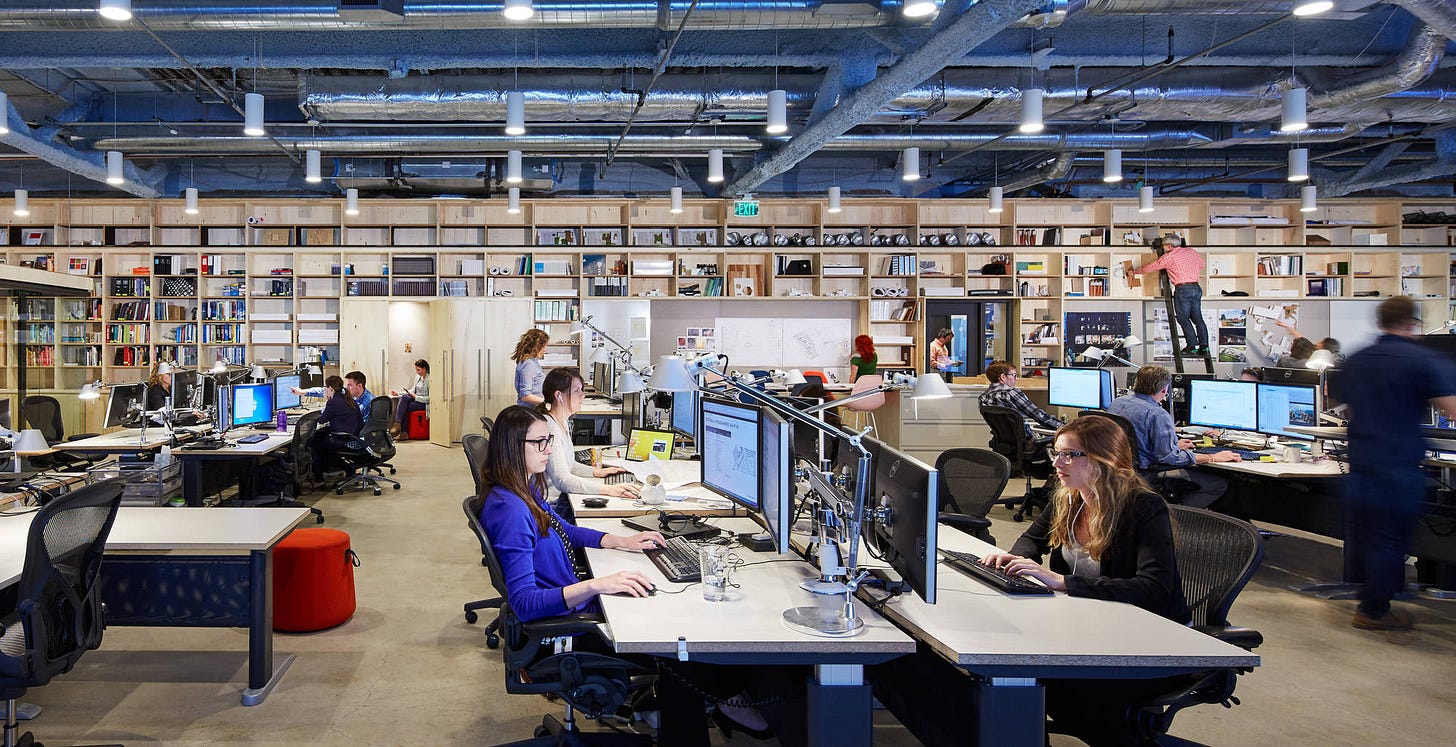Congress is currently in a death match trying to decide how big Biden’s Infrastructure bill should be. Should government spend $1 trillion on rebuilding America’s roads, bridges, and buildings? Or should we expand the definition of infrastructure to include social programs, like childcare, Medicare, free community college, climate change initiatives, and more, with a final price tag of 3.5 trillion?
As I’ve written recently on my blog and newsletter, I am very disappointed with how government cared for children, disabled people, and families during the pandemic. I am concerned that the social programs in the larger package will not actually benefit the clients — the people who need it the most. But let’s leave that concern aside for today, because I want to talk about school buildings.
In the larger bill, $82 billion was slated for school construction and repairs. It is not clear whether schools will still get that money if Congress only passes a smaller package. The 74 has a nice article about the politics going on at the moment, as education advocates are in DC hustling to keep this and other education measures in the final package.
In 2019, I did an article for The 74 about the sad state of America’s schools. At the time, it was a new topic for me with a massive learning curve, which is never a smart move for a freelance writer. But after getting up to speed thanks to some lengthy interviews with very patient sources, I was hooked.
Folks described the current state of America’s school buildings as “a ticking time bomb” and a brewing “storm.”
I wrote:
America’s schools, many built in the late 1960s and early 1970s, are due for a major overhaul after decades of inadequate funding made worse by the 2008 recession. These old buildings are only getting older — in Glendale, where some schools date to the 1940s, drainage problems make them vulnerable during the rainy season, and aging air conditioners frequently conk out as temperatures soar to 115 degrees.
Infrastructure needs are so intense, particularly in rural and urban areas without strong local tax bases that can compensate for the lack of state funding, that advocates describe the situation as a national crisis. “There’s a storm coming, and everybody knows it,” said Danny Adelman, executive director of the Arizona Center for Law in the Public Interest, which is suing the state on behalf of several districts, including Glendale, for more capital funding.
In cities like Boston, advocated told me that students have to show up to school with down coats, because the buildings are not properly insulated. In other areas, students baked in schools without air conditioners or windows that opened. And all that has a huge impact on learning.
More than half of the public schools in the country needed to spend money on repairs, renovations and modernization to put them in good overall condition, according to a 2014 report from the National Center for Education Statistics. Problems range from leaky roofs to faulty heating and ventilation systems to antiquated plumbing, lighting, electrical and communications systems.
Research shows that academic achievement is linked to building conditions. Harvard researchers last year found that poorly cooled classrooms have a significant impact on student learning. Yet the connection between the ability to learn — particularly for low-income students — and the condition of the learning environment is sometimes lost on the public.
A quick google search showed article after article in small local papers around the country detailing problems like this — I put some excerpts into the article — but I was annoyed to find so little attention to these problems in the national press.
Problems may be even greater than these reports in the local press, said Mary Filardo, executive director of the 21st Century School Fund, since superintendents are often hesitant to expose their districts’ problems to the public.
“When the average age of a building is 44 years, things start to fail,” she said.
In addition to emergencies like lead and asbestos abatement, deferred maintenance and repairs of everything from plumbing to roofs, many buildings need ramps and elevators installed to comply with the Americans With Disabilities Act. Then there’s retrofitting to conform to modern security recommendations set in place after Sandy Hook and other school shootings, said Jeff Vincent, director of the Center for Cities and Schools at the University of California, Berkeley. This includes installing classroom doors that lock from the inside, better security cameras and single points of entry into school buildings.
I spent weeks writing this article. I got engrossed in side topics like architectural dream projects for modern school buildings. I tried my damnedest to convey the urgency behind these matters, but the article didn’t get much tr action. So, I put aside my notes for additional articles on the topic, and moved on to the next shiny object.
On my blog, I mused about why the topic didn’t fly. And shared some ideas for modern school buildings. Schools could look like this:
Then the pandemic hit. And for the first time ever, we had national education leaders talking about windows, ventilation, HVAC systems. We learned about the importance in having modern technology and wiring, so students can access the Internet. In policy lingo, the pandemic created a “window of opportunity” for policy entrepreneurs to push policy ideas that were completely ignored in the past.
We need to keep funding for school buildings in this Infrastructure bill. Yes, childcare and other issues are important, too, but if Congressional realities mean that compromises have to happen, school construction must stay in the final bill. It has the most potential for bipartisan support. After the past 18 month, I think we all understand that having a safe, clean place to study is an essential part of the learning process.
LINKS
Interesting newsletter by Matthew Yglesias about Krysten Sinema, moderate Democrats and the future of the Democratic Party.
On the blog, I shared some pictures of my latest book buying spree and home projects. We had a nice chat about the abandonment of disabled kids during the pandemic and why that’s making me question the progressive spending plan.
Cool maps that show how neighborhoods shape children.
Steve went back to the office this week. This Dutch video nailed it.
Russian bots have been apparently getting involved in the Royal Family wars. That’s a weird one. At Jonah’s college, international cyber issues are a new subfield in the political science major. It’s a real job opportunity for political science majors.






